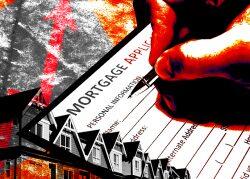The Federal Reserve raised interest rates for the first time since 2018, boosting the benchmark by a quarter of a percentage point, and outlined six more hikes this year, as the central bank moves to slow inflation and keep the economy from overheating, the Wall Street Journal reported.
The Fed’s benchmark federal funds rate will now be between 0.25 percent and 0.5 percent after sitting near zero for two years. The announcement came after two days of meetings in which concern that the war in Ukraine may accelerate the pace of inflation weighed heavily on members.
The Federal Open Market Committee voted for the hike by and eight-to-one margin. James Bullard, the president of the St. Louis Fed, voted in the minority, favoring a half-percentage-point increase. Most officials anticipate the benchmark rate will reach at least 1.875 percent by the end of the year and 2.75 percent by 2024.
The federal funds rate applies to lending between banks and trickles down to consumer and business borrowing on mortgages, credit cards and corporate debt. As borrowing becomes more expensive, people are expected to spend less.
Mortgage rates have already responded to expectations of the Fed’s increase. The average 30-year fixed-rate home loan broke 4.25 percent last week, up almost a full percentage point since the end of 2021.
The Fed cut rates to near zero after the pandemic destabilized job markets and plunged the U.S. into a two-month recession. In the past two years, though, the economy rebounded faster than it did after the Great Recession, when the Fed maintained rock-bottom interest rates for seven years.
While unemployment fell to 3.8 percent in February, annual wage growth neared historic levels and sanctions against Moscow and pandemic lockdowns in China spooked inflation-weary officials.
[WSJ] — Joe Lovinger
Read more


